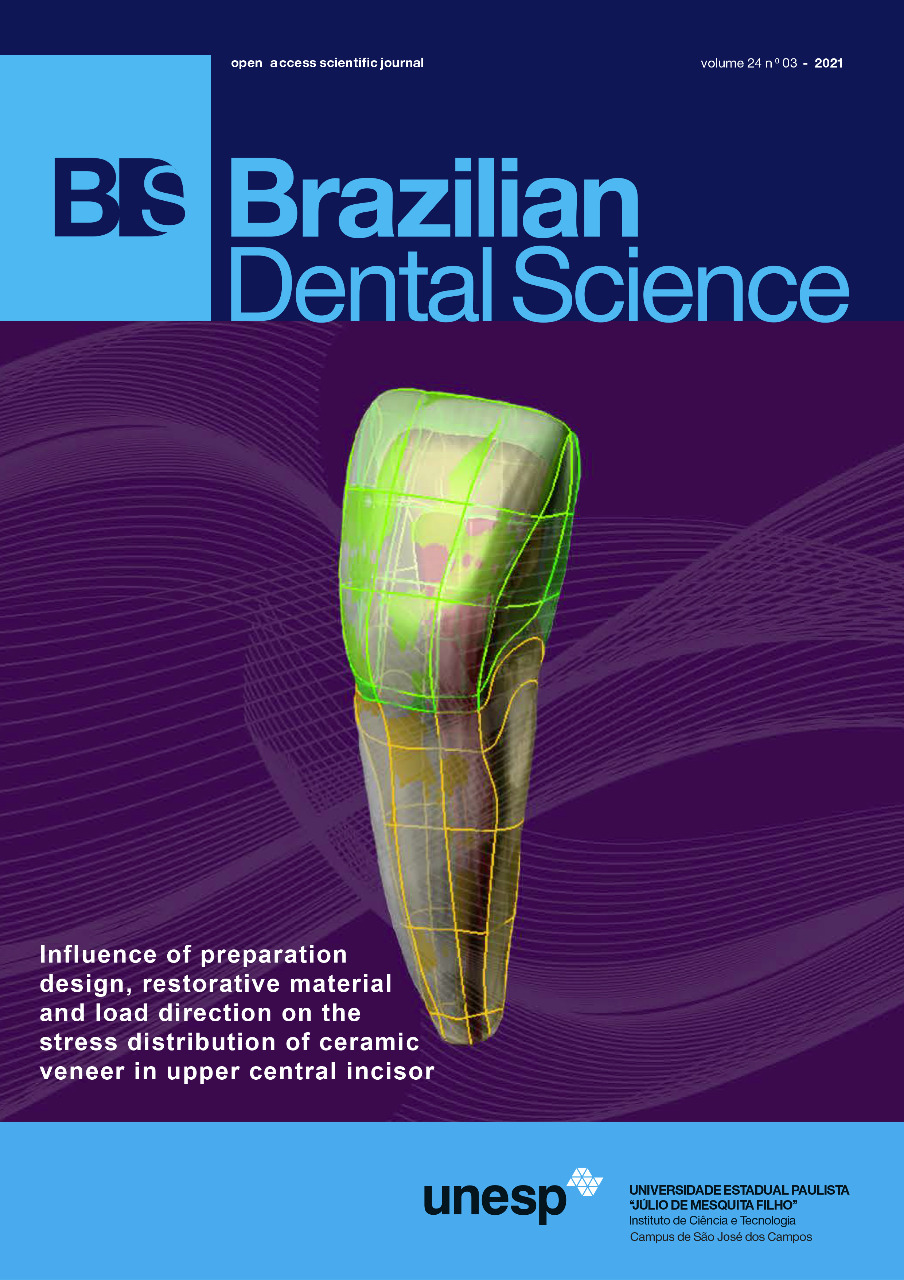One-year clinical evaluation of IPS Empress CAD versus polished Celtra Duo ceramic Laminate veneers (randomized controlled clinical trial)
DOI:
https://doi.org/10.14295/bds.2021.v24i3.2595Abstract
Objective: To evaluate fracture resistance and survival rate of IPS Empress CAD versus Polished Celtra Duo ceramic laminate veneers. Material and Methods: Thirty-six ceramic laminate veneers were fabricated for maxillary anterior teeth. The patients were divided into two groups according to the material Group 1(control group) fabricated from IPS Empress CAD laminate veneers and group 2(intervention group) fabricated from Polished Celtra Duo laminate veneers. Standardized the same preparation with butt joint design and chamfer finish line located supra gingival were performed for all the teeth. The fabrication of the veneers was performed using Cad\Cam (Ceramill motion) machine, with software (Exocad). The veneers surfaces were treated and silanated according to the manufacture instruction of each ceramic and enamel surfaces were etched where total etch adhesive protocol was obeyed using BISCO. Follow up sessions were done every two months up to one year for each patient using dental probe and operator vision to evaluate the fracture, survival rate, marginal adaptation, sensitivity and caries. according to USPHS criteria (United States Public Health Service). This was performed by an experienced, blinded investigator. Results: Fracture resistance, marginal adaptation, retention, caries and sensitivity were evaluated according to the criteria of USPHS and we found there is no significant difference as both groups scaled zero score. Conclusion: Both IPS Empress Cad and Polished Celtra Duo laminate veneers revealed successful clinical performance in terms of fracture resistance, marginal adaptation, retention, and sensitivity after one year follow up period.
Keywords
Ceramic laminate veneers; IPS Empress CAD; Celtra DUO; Clinical performance.
Downloads
Downloads
Published
Versions
- 2021-07-01 (2)
- 2021-07-01 (1)
How to Cite
Issue
Section
License
Brazilian Dental Science uses the Creative Commons (CC-BY 4.0) license, thus preserving the integrity of articles in an open access environment. The journal allows the author to retain publishing rights without restrictions.
=================




























